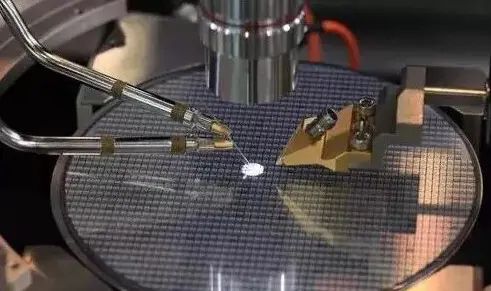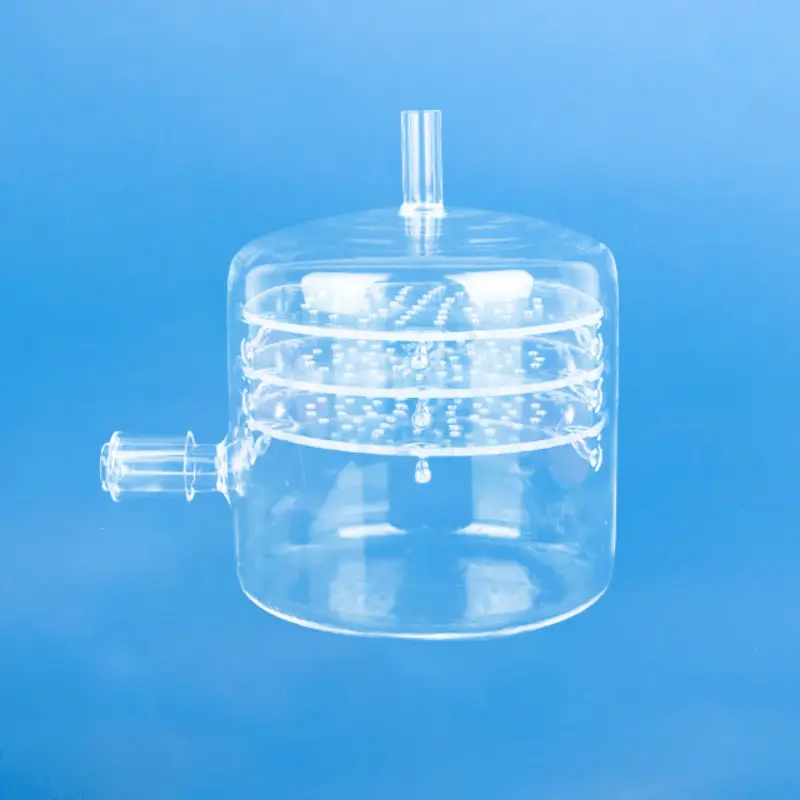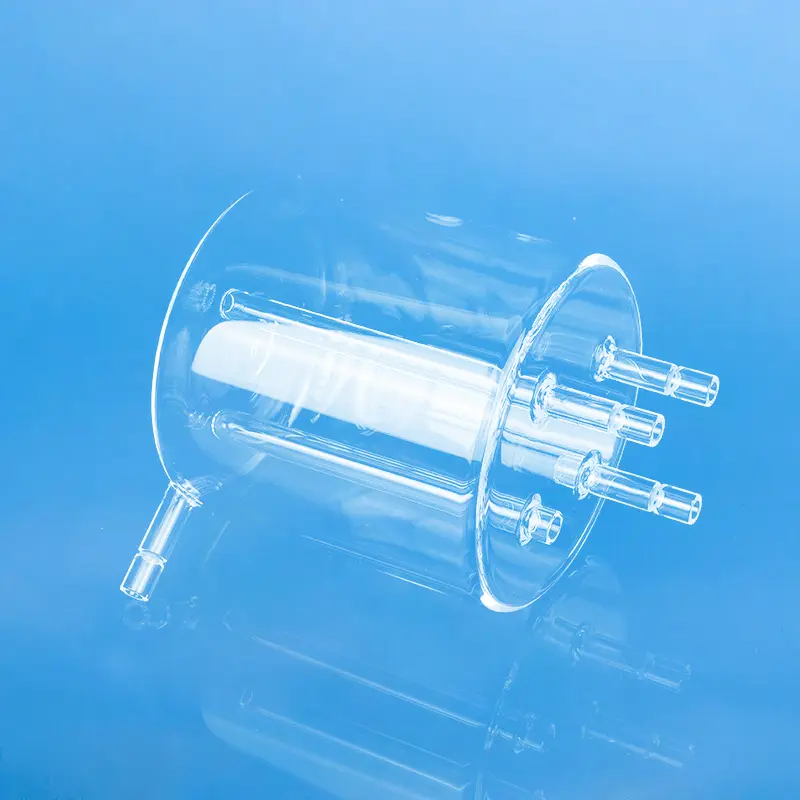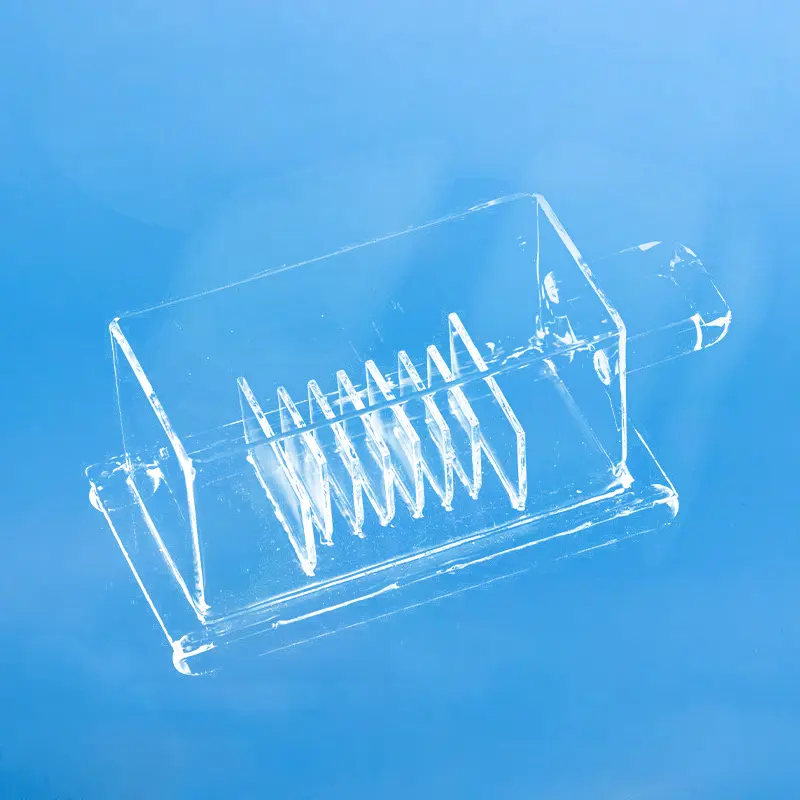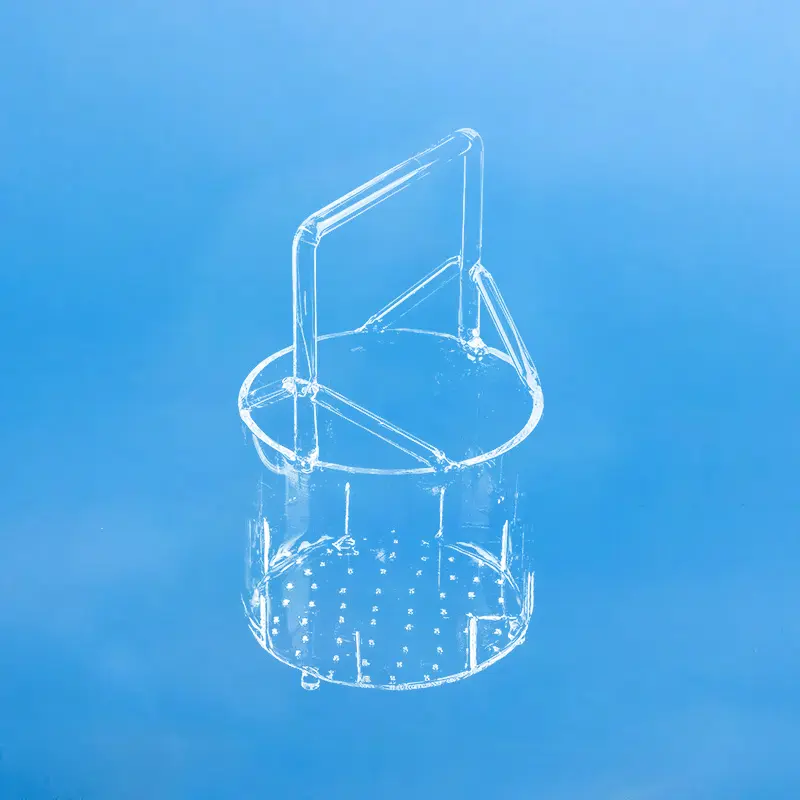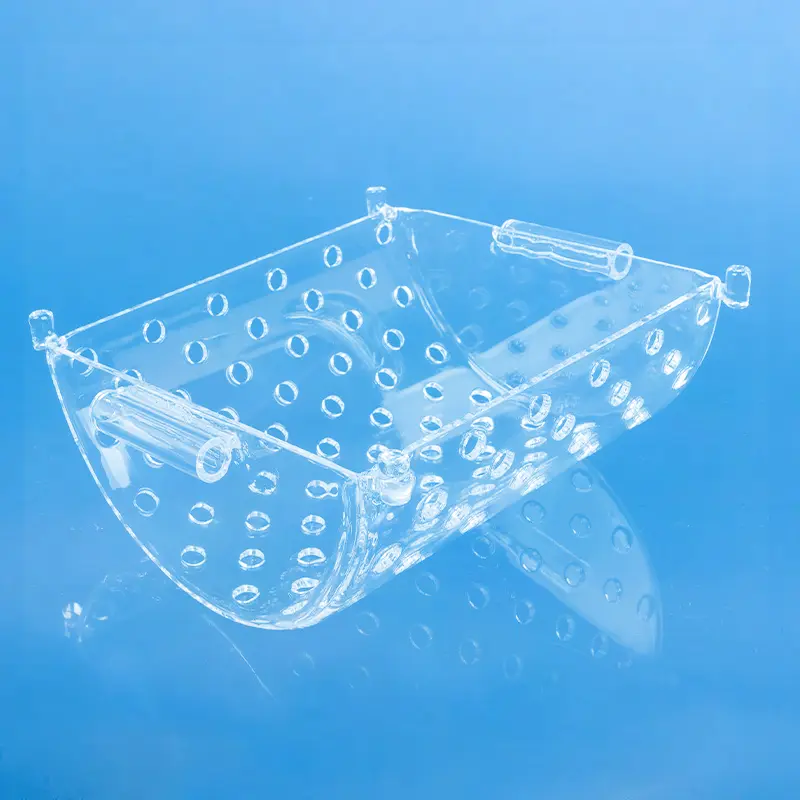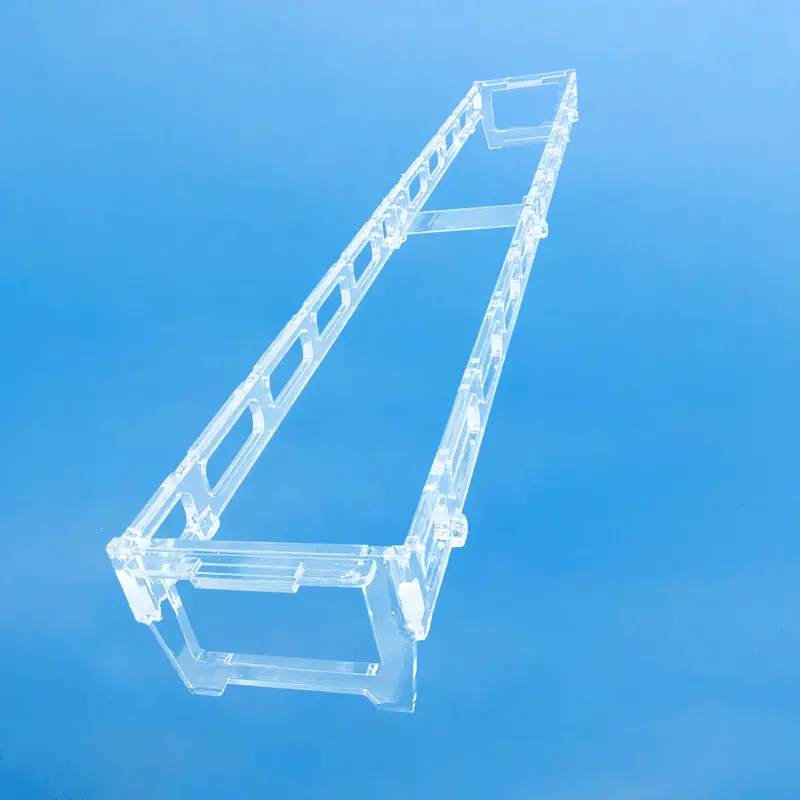Our high-purity quartz wafer cleaning tanks are precision-fabricated fused silica solutions, essential for demanding semiconductor and microelectronics wet processing. Designed for cleaning, etching, and rinsing, these custom tanks offer exceptional chemical resistance, thermal stability, and ultra-low contamination. We engineer bespoke designs to perfectly fit your wafer size and process requirements, ensuring optimal performance for critical wafer handling.
| Property Content | Property Values |
|---|---|
| SiO2 | 99.99% |
| Density | 2.2×10³ kg/cm³ |
| Hardness | 5.5 - 6.5 Mohs' Scale 570 KHN 100 |
| Tensile Strength | 4.8×10⁷ Pa (N/mm2) (7000 psi) |
| Compression Strength | >1.1×10⁹ Pa (160,000 psi) |
| Coefficient of Thermal Expansion | 5.5×10⁻⁷ cm/cm·°C (20°C-320°C) |
| Thermal Conductivity | 1.4 W/m·°C |
| Specific Heat | 670 J/kg·°C |
| Softening Point | 1730°C (3146°F) |
| Annealing Point | 1210°C (2210°F) |
| Strain Point | 1120°C (2048°F) |
| Work Temperature | 1200°C (2192°F) |
| Electrical Resistivity | 7×10⁷ ohm cm (350°C) |
| Size | Customized |
| Logo | Customized Logo Accept |
High-Temperature Resistance
Quartz material possesses a high melting point, allowing it to maintain stable performance at elevated temperatures, making it suitable for applications that require high-temperature cleaning processes.
Corrosion Resistance
Quartz exhibits excellent resistance to corrosion from most acids, with the exception of hydrofluoric acid. This property allows it to withstand the corrosive effects of a variety of cleaning agents.
High Transparency
Although the cleaning tank itself does not require transparency, the high transparency of quartz indicates its high material purity, which helps maintain the cleanliness of the cleaning environment.
Application Scenario
Quartz wafer cleaning tanks are widely utilized in sectors such as semiconductor manufacturing and the photovoltaic industry for cleaning silicon wafers and high-precision materials like optical components. In semiconductor fabrication, silicon wafer cleaning is a crucial step for ensuring chip quality. In the photovoltaic industry, cleaning silicon wafers is essential for enhancing the conversion efficiency of solar panels.
Quartz wafer cleaning tanks are primarily used in semiconductor manufacturing for high-precision cleaning of silicon wafers. This process is designed to remove particles, organic matter, metal ions, and other contaminants from the wafer’s surface, ensuring the surface cleanliness meets the stringent requirements of semiconductor fabrication.
The typical operating procedure includes steps such as wafer loading, chemical cleaning, deionized water rinsing, spin-drying, and final drying. The specific operation details must be followed based on the equipment’s model and user manual.
The effectiveness of the cleaning process can be evaluated using various methods, including surface particle counting, metal ion residue detection, and surface roughness measurement. These evaluations typically require specialized testing equipment and trained personnel.
Frequently asked questions
We specialize in the end-to-end manufacturing of high-purity quartz glass components. Our core product lines include:
Quartz Tubing & Rods: A wide range of diameters and specifications.
Quartz Plates & Discs: Precision-cut and polished for optical and industrial use.
Quartz Labware: A full suite of standard and custom glassware, including beakers, flasks, and boats.
Semiconductor-Grade Quartz: High-purity components like process tubes and carriers for semiconductor fabrication.
Custom Fabricated Components: We can produce complex parts tailored to your unique designs and specifications.
Yes. Custom fabrication is at the core of our business. With over a decade of specialized experience, we partner with companies to provide expert OEM/ODM services. Our capabilities include welding, grinding, drilling, polishing, bending, and other precision processing techniques to create components that meet your exact requirements.
Quality is paramount in our manufacturing process. We are an ISO 9001:2015 certified manufacturer, ensuring that our processes meet international quality management standards.Our products also undergo rigorous SGS testing for purity and performance. We use high-purity raw materials (up to 99.998% SiO2) to produce fused quartz and fused silica products with exceptional thermal stability, high-temperature resistance, and chemical inertness.
We've streamlined our process to be as efficient as possible:
Submit Your RFQ: Send us your technical drawings, specifications, and requirements via our website contact form or email.
Rapid Response: You can expect an initial response within minutes and detailed communication within half an hour.
Design & Proposal: We will deliver a detailed design proposal and a competitive quote within 24 hours.
Prototyping & Production: Upon approval, we move swiftly from prototyping to full-scale production to meet your deadlines.
Partnering with Aoxin Quartz offers several key advantages:
Proven Expertise: With 10+ years in the industry, we have the technical knowledge to tackle complex challenges.
One-Stop Solution: We manage the entire production process, from sourcing high-purity raw materials to fabricating and finishing complex components.
Competitive Value: Located in a major quartz production hub, we leverage an efficient supply chain and advanced manufacturing to offer exceptional quality at a competitive price point.
Dedicated Partnership: Over 90% of our clients become long-term partners. We are committed to your success through responsive service, reliable quality, and innovative solutions.


